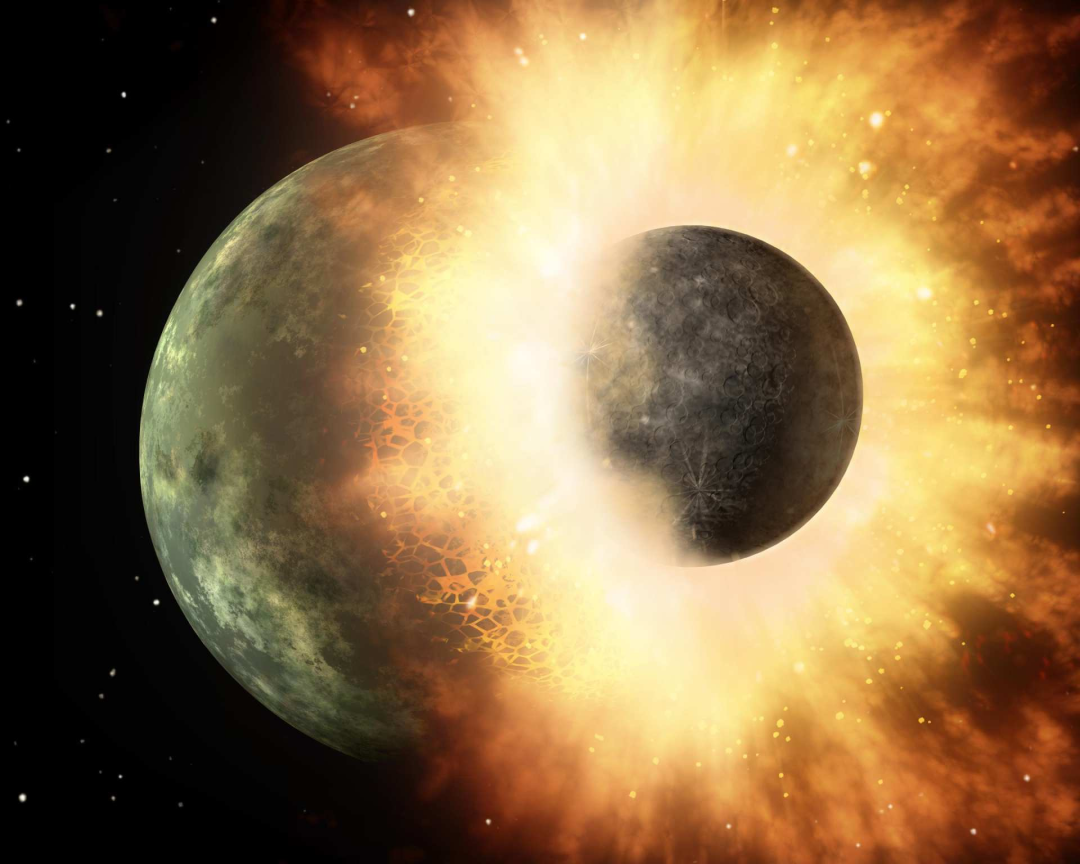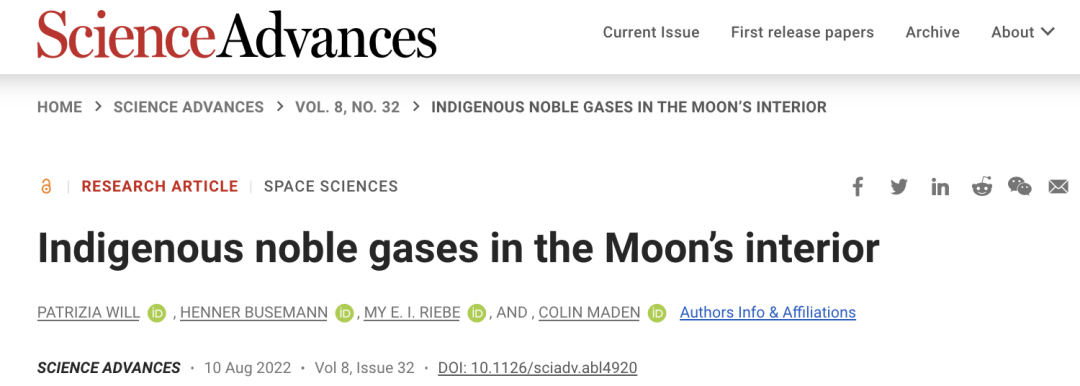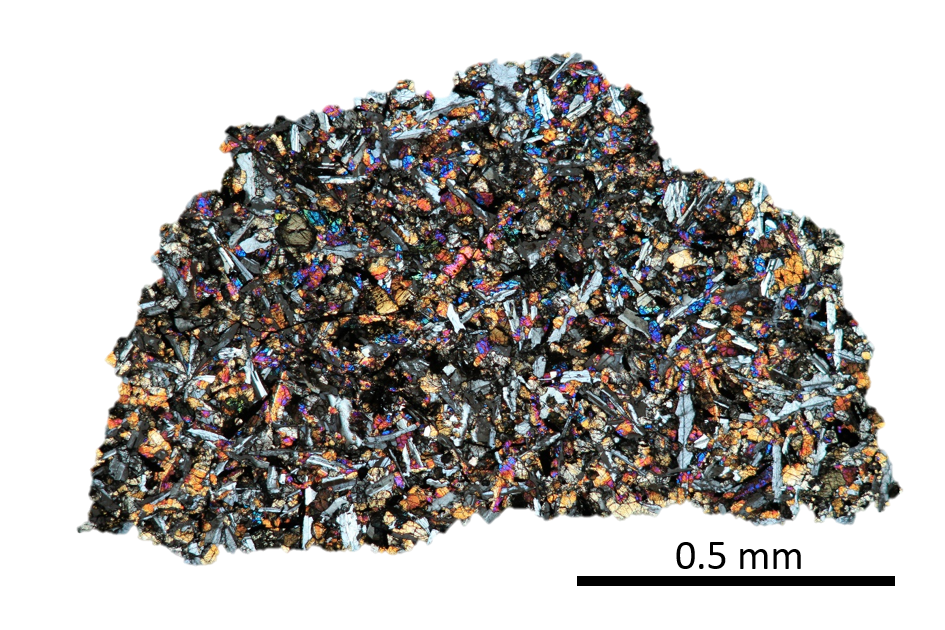After watching "Lone Moon", don't look at where the moon comes from?
Author:Institute of Physics of the Ch Time:2022.08.16
How is the moon formed?
The most mainstream hypothesis is the "Big Crane Paragraph". About 4.5 billion years ago, a Martian -like celestial body theia hit the young earth, throwing part of the earth (mainly mantle) into the universe, thereby generating the moon.

Picture | Theia hit the earth. (Source: Wikipedia)
Evidence that supported the "big collision false" was previously brought back from the Project Apollo. Today, scientists have a new clue, which further supports the "big collision leave" related to the formation of the moon. In a latest study, the earth chemist, cosmic chemist, and rock scholar of the Federal Institute of Technology (ETH ZURICH) found rare gases (also known as inert gas) from the moon meteorite -氦 (also known as inert gas) (also known as inert gas) Helium) and NEON. Related research papers are based on the title of "Indigenous Nive Gases in the Moon’ s Interior "and have been published on the authoritative scientific journal" Science Advances ".

(Source: Science Advances)
4 hypothesia
Regarding the origin of the moon, in addition to the "big collision false", scientists have also proposed "capture hypothesis", "homologous hypothesis" and "split hypothesis", but there are certain theoretical defects.
In the "capture hypothesis", scientists believe that the moon is one of the many cosmic celestial bodies formed in the early formation of the solar system. It also floats on the track like other celestial bodies. Until one day, because of the attraction of the earth, It became the only natural satellite on the planet. However, if you want to establish this hypothesis, you need to have a very large atmosphere to consume the energy of the moon to reduce the speed of the moon. The "homologous hypothesis" tells another different story, that is, the earth and the moon are formed in the same native suction. But this hypothesis cannot explain the lack of metal iron on the moon, nor can it explain the high -angle momentum of the moon system. There are also certain theoretical defects in "division hypotheses". The hypothesis believes that the earth breaks due to its rapid rotation, and the broken part has become the moon. However, in order to produce such a big centrifugal force, the earth needs ultra -high -speed rotation at the beginning of the birth. In the "big collision false", scientists believe that huge impacts in the early days of the birth of the solar system are very common. The large collision model simulated by the computer shows that the dual -star system generated after such impact has sufficient angle volume to match the current rail parameters of the ground moon system, and it can also explain the reason why the moon has a relatively small core.

Figure | Simple description of the "Big collision false". (Source: Wikipedia)
In addition, this hypothesis can also reasonably explain the different moon composition: most of the components of the moon comes from the celestial bodies before the impact, not the native earth. However, this hypothesis is still not perfect. For example, research on meteorites shows that the oxygen and tungsten isotope components of other inner solar body celestial body such as Mars and stoves are different from the earth, but the earth and the moon have very similar isotope components. A reasonable explanation is that the impact of the formation of the earth moon system mixes the substances volatile when the earth and the moon formation are formed, which may cause the composition of the isotope between the two celestial bodies to become balanced, but this explanation is still controversial. Although the "big collision leave" is not perfect, it may be the most sufficient explanation of the current argument for the formation of the moon, and more evidence will be supported in the future.
New evidence supports the "Big collision false"
Rare gases refer to elements that belong to the 18th family in the element cycle table. They are similar in nature, and they are colorless and tasteless at normal temperature, and it is difficult to make chemical reactions. There are 6 kinds of rare gases of natural existence, namely (HE), 氖 (NE), 氩 (AR), 氪 (kr), 氙 (XE), and 氡 (RN). The main application of rare gases in industry is lighting equipment, welding and space detection. For example, the hybrid gases of nitrogen and nitrogen are the protective gas filled in incandescent lamps; 氪 is often used for higher performance incandescent lamps because it can reduce the evaporation rate of filaments; Light of color, such as the common lamps in neon lights. In this work, the research team used the rare gas mass spectrometer to measure the meteorite sample in the Middle Asian millimeter -level glass particles (formed when the basalt was cooled), eliminating the source of the solar wind as the detected gas. The first author of the paper and the communication author Patrizia Will analyzed the 6 -month -old meteorite sample collected from Antarctica. These samples were collected by NASA in the "cold desert" in Antarctica. The surface of the moon was constantly hit by asteroids. A high -energy impact made the rock fragments sprayed out of the middle layer of the lava flow, and eventually came to the earth in the form of meteorite. These meteorites are composed of basalt, and Xuanwu Rock is formed when the internal magma of the moon is poured out and quickly cools down. Since it is covered by other basalt, it is avoided by other Xuanwu rock layers to avoid damage from cosmic rays, especially solar winds. The results showed that glass particles retained the chemical fingerprints of solar gases (characteristic characteristics): 氦 and 氖 inside the moon, and the detected crickets and crickets are much higher than expected. Figure | LAP 02436 sample thin slice under cross -polarized light. (Source: Zurich Federal Institute of Technology)

This discovery strongly supports the moon's "inheritance" of the rare gas of the earth. "This is an exciting result, and these basalt materials have nothing to do with any exposure on the surface of the moon," WILL said. In this regard, Henner Busemann, a professor at the Federal Institute of Technology, a thesis, said: In the future work, the research team will continue to find other rare gases in the moon meteorite, such as Xenon and Krypton, and other volatilization Sexual elements, such as hydrogen or halogen. "This discovery may help Earth's chemistry and geoscience scientists to create new models, and more generally shows how these most volatile elements are survived in the formation of planets in our solar system." References : Https://www.eurekalert.org/news-reases/961341https: //en.wikipedia.org/wiki/giant-impact_hypothesis
Reprinted content only represents the author's point of view
Does not represent the position of the Institute of Physics of the Chinese Academy of Sciences
If you need to reprint, please contact the original public account
Source: academic headline
Original title: "The Origin of the Moon" adds a new clue. Where is this mysterious planet?
Edit: Cloud Kaiye
- END -
Fang Chen, a struggler, Fang Chen, Researcher of the Institute of Physics of the Chinese Academy of Sciences -strive to explore unknown areas

Pen, paper and computer are three essential things on the desk of Fang Chen's desk...
Parallel forums, clouds on the clouds, cloud exhibitions ... the sixth World Intelligent Conference will conclude

The 6th World Intelligence Conference has successfully concluded in recent days. T...